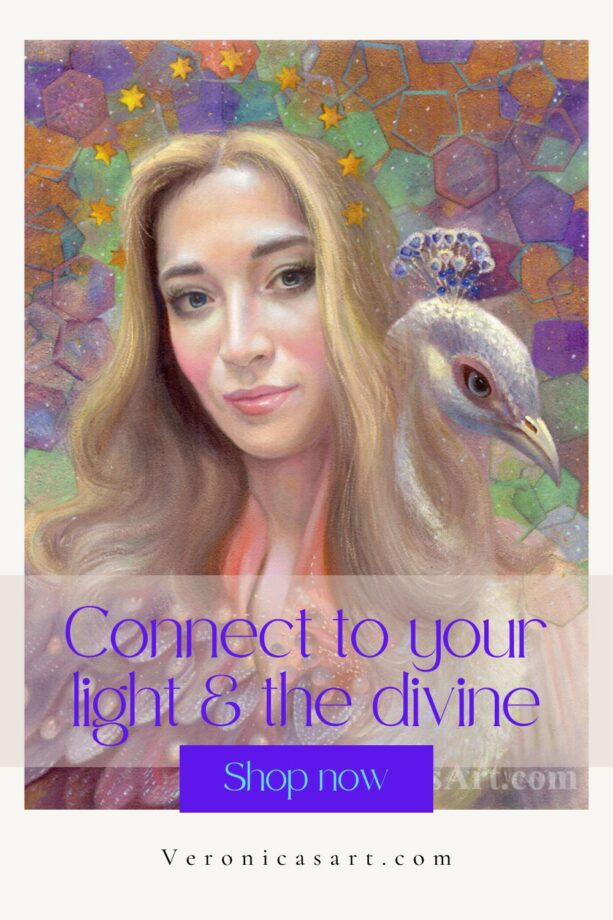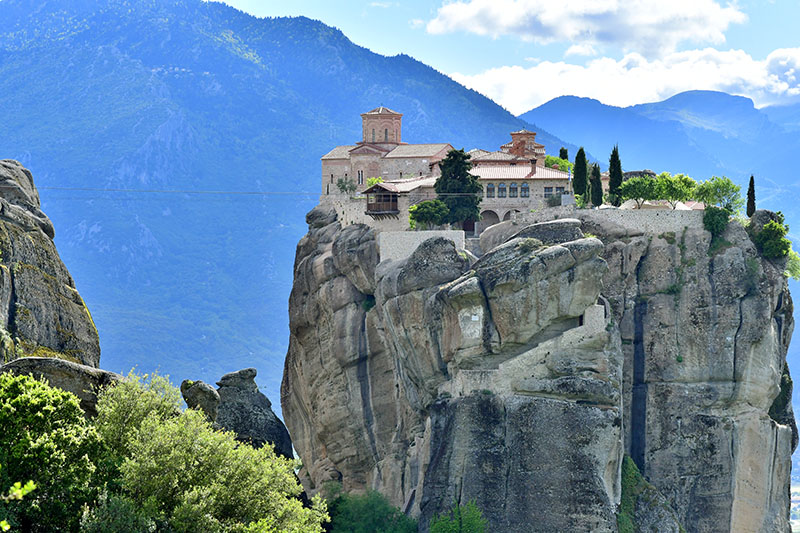
Holy Meteora: the most magical place on Earth
While I’m not religious, I find that holy Meteora in Greece is a truly fantastic place on Earth. When you step inside a monastery and walk up to its iconostasis you get a feeling that can’t be described or shown in pictures. Rebuilt walls of ancient churches hold enigmatic power and spirituality I haven’t seen or felt anywhere else. Floating in the air, Meteora is a group of 6 monasteries of various size that provide shelter to monks, religious art and spirit. Stunning views from and to the monasteries are everywhere along the road leading to the top. Located about 5-6 hours away from Athens, Greece, it’s a must-see attraction.
Modern historians use the term Byzantine Empire to distinguish the state from the western portion of the Roman Empire. The empire was centered on Constantinople, the capital city of the Byzantine Empire and the rebuilt version of Byzantium that was oriented towards Greek culture with Orthodox Christianity.
Meteoro means “suspended in the air” since all these monasteries got built on top of steep rock cliffs.
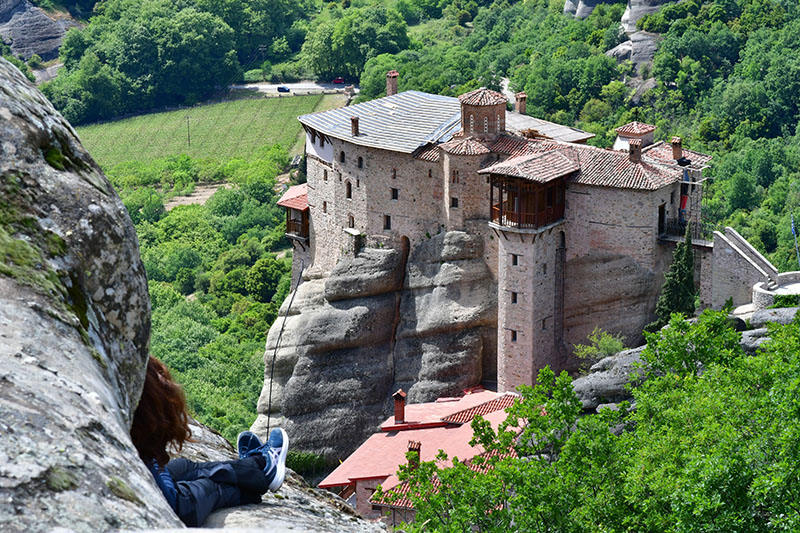
Video on YouTube:
What is the history of Meteora and its monasteries in Greece?
Early Hermit Life (10th-14th Centuries):
- The dramatic rock formations of Meteora first attracted monks seeking solitude around the 10th century.
- These early ascetics lived in caves scattered throughout the cliffs.
Monastery Establishment (14th-16th Centuries):
- The 14th century marked a shift. Saint Athanasios founded the Great Meteoron Monastery, the first of the large, perched monasteries, around 1340.
- Other monasteries followed throughout the 14th-16th centuries, fueled by a growing monastic movement and the desire for security against Ottoman invasions.
- Building these monasteries on such heights posed a challenge. Monks used elaborate techniques involving scaffolding, nets, and winches to hoist materials and themselves up the cliffs.
Golden Age and Decline (16th-17th Centuries):
- The 16th and early 17th centuries were a golden age for Meteora. Post-Byzantine Monasteries, including Varlaam, Rousanou, and Prodromos, appeared.
- The monasteries flourished, becoming centers of learning, religious art, and cultural preservation.
- Many of the monasteries’ beautiful frescoes and architectural features date from this period.
- However, by the 17th century it declined. Attacks by bandits and changing political landscapes took a toll on Meteora.
Modern Day:
- Today, only six of the original 24 monasteries remain active.
- These monasteries are UNESCO World Heritage Sites and major tourist attraction in Greece.
- Visitors can marvel at the breathtaking clifftop setting, explore the monasteries’ history and religious art, and experience a glimpse of monastic life.
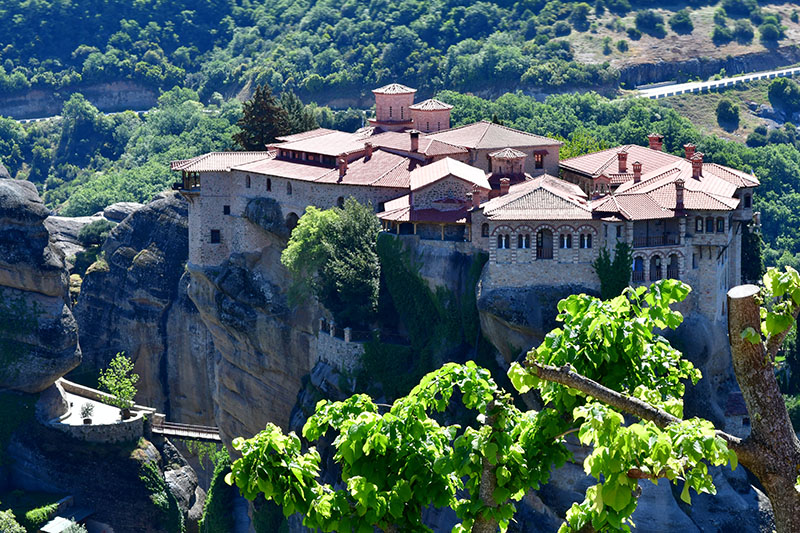
THE MONASTIC CENTER OF THE HOLY METEORA
Holy Meteoro, the stone city of Stagoi, is the largest and most important monastic center in Greece after mount Athos. This otherworldly city of rocks sits at about 4000 meters high. The first monks built the monasteries of the Holy Meteora with hard labor and passion, which exists at the crossroads of faith, civilization and history. The exceptional combination of natural beauty and monastic architecture attracts tourists and believers alike. This unique monastic center became the World Heritage Site in 1988. Holy Meteora has also been declared as the archeological site and receives protection of the antiquities from the European legislation. It also has a wild bird protection status. Meteora’s religious status and its center is protected by the Greek law that declares it as a sacred place.
The founder of the first monastery of Transfiguration – St. Athanasios named the place ‘Meteoron’ to describe the ‘Broad Rock’, the pinnacle of which he was the first to climb in 1343/4 AD. This term literally means ‘suspended in the air.’ Earthly monks created and lived beyond worldly standards in space “between the sky and earth.”
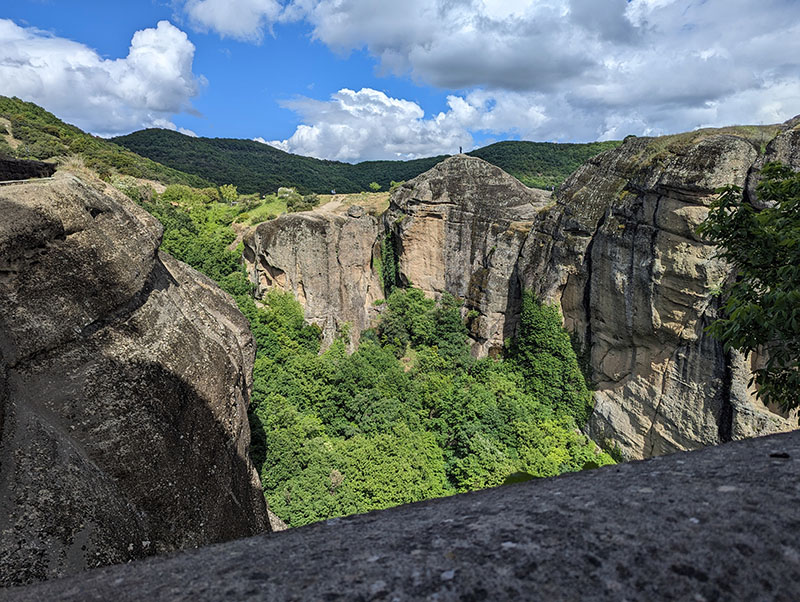
Geological Formation of the Rocks:
The most probable theory of the rocks formation is the result of a cone-shaped delta. Giant rocks, sand and sediment were carried by a river and deposited in the ancient lake of Thessaly. The river entered the sea near now present Kalambaka over 25 million years ago. When the water flowed into the Aegean Sea, following the separation of the Mount Olympus from the Mount Ossa, this cone-shaped delta eroded further because of the earthquakes, wind and heavy rainfall. It split to form cave-like rocks and hills of various shapes to create the spectacular landscape of the ‘rocky forest.’
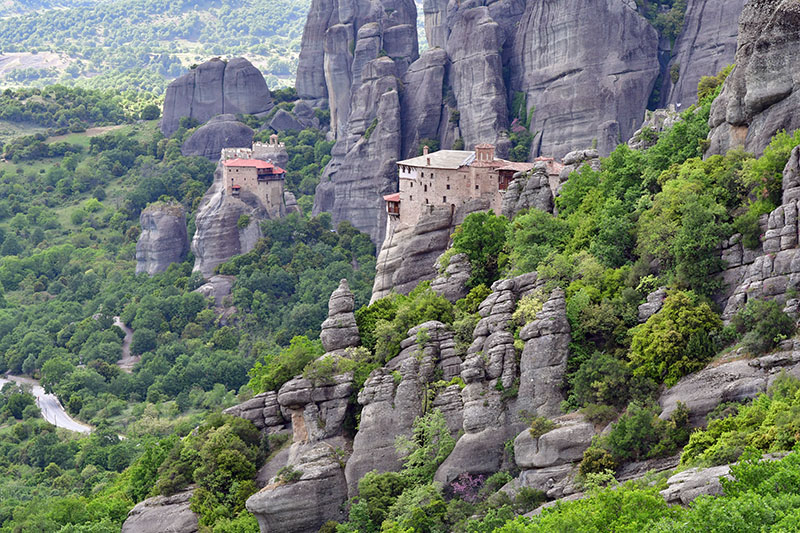
Holy Meteora Monasticism over the centuries:
The first monks of the holy Meteora appeared as cave-dwelling ascetics in the 11th century. Steep peaks of god-created rocks became heavenly invitation to the monks to practice their faith and spirituality. At first, they created small places for prayer in caves where they lived as hermits. Eventually, they established ascetic lifestyle and a holy place. In the 12th century, they formed a monastic community with regular prayer on Sundays. The following years, the monks ascended the higher rocks using stakes and ropes. Over the centuries they established 41 monasteries and hermitages in Meteora.
Today, there are 6 monasteries with organized monastic communities, which are:
- Megalo Meteoro Monastery – Monastery of Transfiguration
- Varlaam or All Saints Monastery
- Agios Nikolas Anapafsas Monastery or St. Nicholas Anapafsas
- Rousanau Monastery or St Barbara’s Monastery
- Agia Triada Monastery or the Holy Trinity Monastery
- Agios Stefanos Monastery or St Stephan Monastery
Because of time, wars, bandits, most of the monasteries were either abandoned or destroyed. Over the last fifty years, the restoration program re-established these monasteries. It’s been a lot of architectural reconstruction, preservation of frescoes, and other work to preserve this monastic center today.
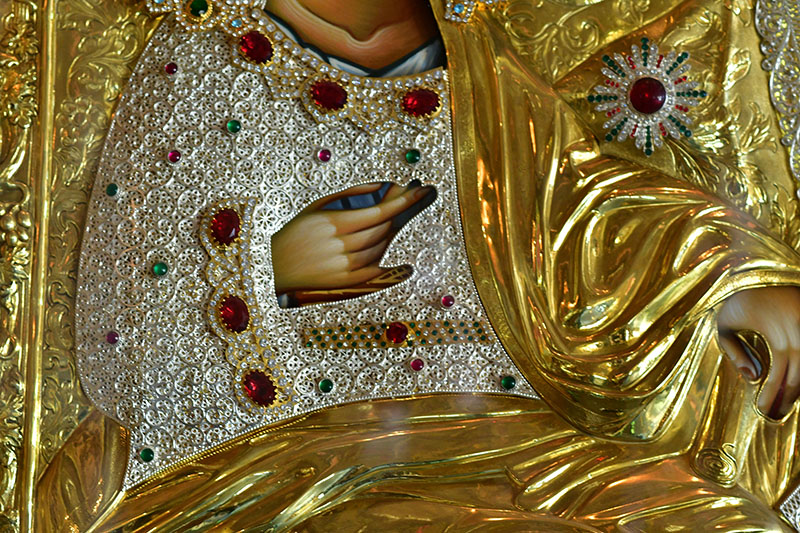
Monks
A monk changes his name during his tonsure and wears a robe. He leads an ascetic life either in solitude or in a coenobium (a monastery). He constantly exercises his faith and prays, fighting for the absolution and salvation of his soul and his union with God.
Vows – are virtues. Every monk makes three vows to God:
Vow of obedience: Obedience is imperative since the monk is struggling to dispose of the deep passion of ambition and to reach humility through this effort.
Vow of chastity: There is a distinction between physical and mental chastity and it heals sensuality. The monastic chastity-virginity does not signify the renouncement of marriage, which is blessed by God and the Church, but unconditional love towards God.
Vow of poverty: The monk must fight against the “passion of ownership” or greed, the “love of money” or avarice and material possessions.
The value of monasticism at the Holy Meteora over the centuries:
The monks’ love of God and their zeal for the monasticism and asceticism formed the impetus for this miraculous lifestyle. Monasticism is the highest calling and path that leads to holiness. It’s the complete devotion to the triune God. It is the imitation of the angels in the divine love. The entire monk’s life consists of a full opening of the heart to God and his total obedience to His Holy Will, keeping his commandments. It’s about constant strive for sanctification and prayer for the salvation of the entire world. Whether working, studying or praying, the monk cries out in a prayer, “Lord Jesus Christ, Son of God, have mercy upon us.”
The monastic community welcomes visitors as they preserve their spiritual site. However, their primary purpose is to offer a living witness of Christ when people loose their sense of national and religious identity and experience economic and spiritual crisis. The monks strive to preserve this precious legacy of faith and tradition.
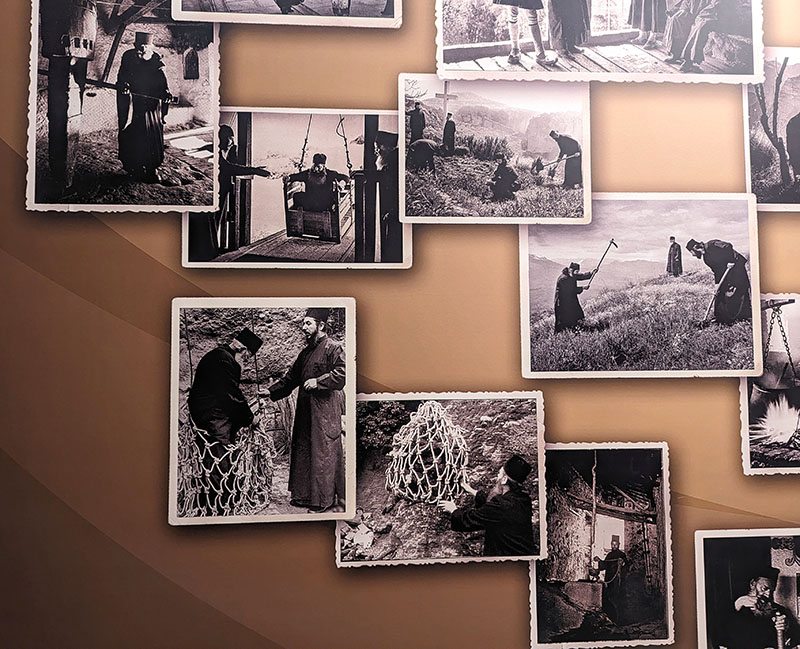
Below you’ll find some texts and explanations of the Orthodox religion, symbolism and history that I took from the grounds of 6 monasteries across Meteora and modified those texts for better reading experience.
THE ORTHODOX CHURCH AND ITS SYMBOLISM
The Orthodox Church is a visual symbol of Him whom human eyes cannot see; it is a miniature of the world, it is a "microcosm" which symbolizes the visible and invisible world. It is a sacramental locus par excellence, which symbolizes and realizes the relationship with heaven. It is an image of the world and in particular of the Triune God, since God is everywhere and above all.
Since it depicts the Triune God, it is divided into three parts:
- The most sacred Sanctuary is the model of heavens. The throne of the immaterial God is symbolized by the Holy Altar. The heavenly powers are found at the Holy Altar and in heaven, symbolized by the priests and the Bishop -the image of Christ.
- The nave represents the invisible, heavenly world (Angels, Prophets, Apostles, heavenly Divine Liturgy) in its upper level and the visible world in its lower level.
- The narthex is the first level of the church’s structure intended for the preparation for the Holy Baptism and the penitents. Today, some of our Church services are held in the narthex. Whenever there are catechumens, it is used for their instruction in faith.
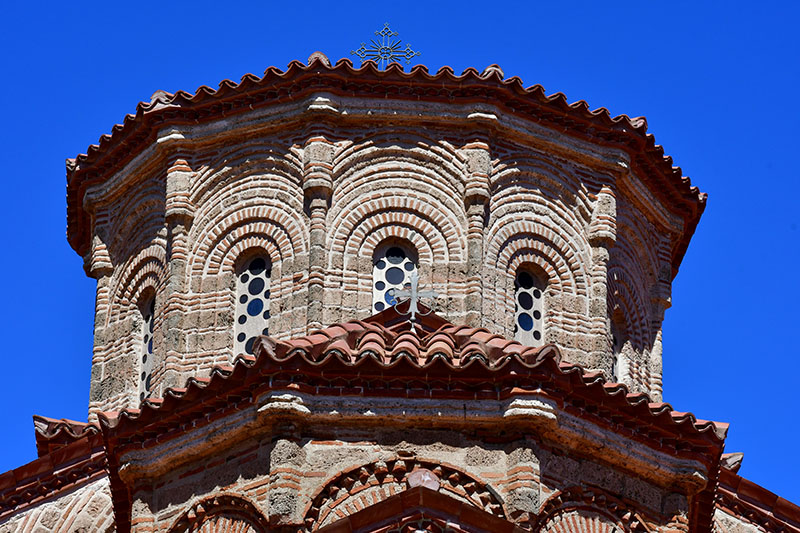
The cupola is at the exact center of the church and it symbolizes heaven. Christ, the The Lord of the Universe, is depicted on it. Just as He did on the Cross, the Lord has stretched out His arms embracing the whole world. He united “what was once fractured”, so that in every Orthodox Church we find ourselves not before Christ, but actually with Him. We are His limbs, His body; we are in His embrace.
According to the Orthodox iconography, as we are looking downwards from the cupola, we see the celestial angels and the heavenly Divine Liturgy, and then the Prophets, who foresaw the Incarnation of our Lord. Next, we see the Apostles, who bore witness to His First Coming to the world, the events of our Christ’s life on earth, His parables and His miracles. We see glorified saints at the lowest level. They became our powerful protectors and intercessors to our Heavenly King Jesus Christ as well as our safe guides to the path of salvation.
In the Orthodox Church, the believer transcends the place and time of this temporal world. While being on earth he partakes heaven. He communes with the celestial, while living in this material world. He foretastes the eternity while working within earthly time limits.
The most joyful event of all human history, that is the victory of life over death after the glorious Resurrection of Christ, is experienced inside the church. The Orthodox Church is the Church of the Resurrection, because it lives and experiences the actual fact of the Resurrection continuously. Orthodox life is a constant Easter!
In the Icon painting we see the life of incorruption and an expression of the transcendental reality of the Church either through the depictions of the Resurrection or the images of Saints. The believers feel this spiritual elevation and experience graceful joy of the victory over death and corruption. This way, they leave this earthly life to be in the eternal Kingdom of God.
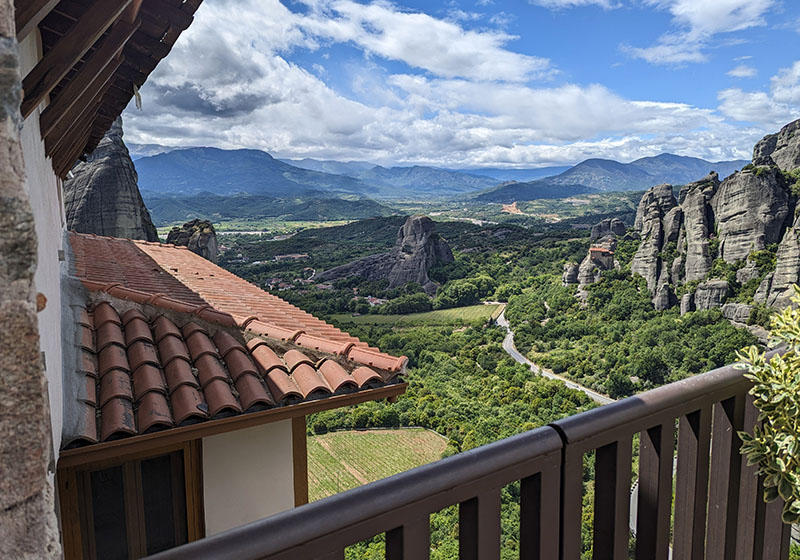
The Talanton
Fulfilling God’s commandment, Noah made a signal with a plank of wood for animals to get into the Ark to be saved from the cataclysm. “the Talan-ton” signals the time for the Holy Services to gather the faithful to get into the “New Holy Ark, Christ’s Church, and be saved from the cataclysm of sin.
The Katholikon
“Katholikon” refers to the principal church building within a monastery. This church serves as the central place of worship for the monastic community. It’s equivalent to a conventual church in Western Christianity. In some cases, “katholikon” refers to the main church of a diocese, similar to a cathedral in the Western Christian tradition. This church would be the seat of the bishop who oversees the diocese.
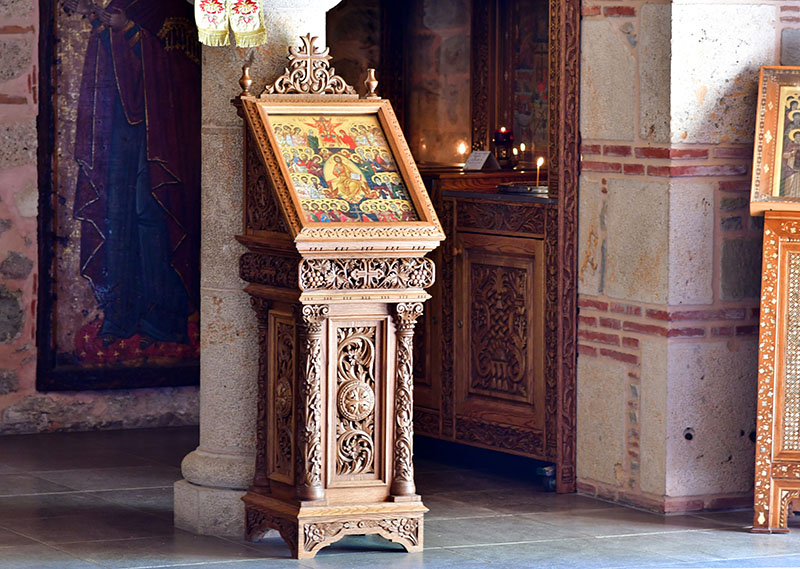
The narthex of the katholikon
The narthex of the katholikon, within the Eastern Orthodox Church, refers to the entrance vestibule or hallway of the main church building in a monastery (the katholikon). The narthex is typically situated at the western end (entrance side) of the katholikon and serves as a transitional space between the outside world and the sacred space of the church interior. The narthex concept originated in early Christian basilicas and was adopted by Byzantine churches. Today, the narthex in a monastery katholikon functions as an entrance space for visitors.
Historically, it was:
- Welcoming Area: The narthex provided a space for newcomers or those not yet full members of the church community to gather and participate in some aspects of the service.
- Instructional Space: In some cases, the narthex might have been used for religious instruction or announcements.
- Penitential Space: Those undergoing penance or temporary exclusion from the main church service might wait in the narthex.
- Decoration: While the main church interior (nave) is usually more richly decorated with religious imagery, the narthex might have some frescoes or icons as well. These could depict scenes from the Bible or stories of saints.
THE ORHTODOX ΒΥΖΑΝΤΙΝΕ PAINTING
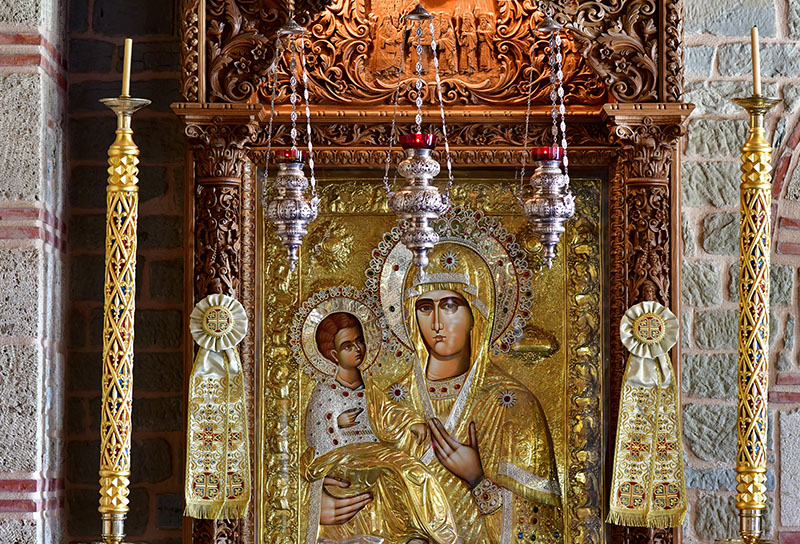
The Eastern Orthodox Church and Byzantine art:
The Eastern Orthodox Church and Byzantine art emerged around the same period, with roots in the Roman Empire and early Christianity. Both the Eastern Orthodox Church and Byzantine art did not have a single origin point. They developed within the Eastern Roman Empire, which encompassed parts of the Near East, North Africa, and southeastern Europe. Major cities like Constantinople, Thessaloniki, and Athens were important centers for the Eastern Orthodox Church and Byzantine artistic production. Artistic styles and theological ideas flowed throughout the Eastern Roman Empire, with regional variations emerging over time. The Eastern Orthodox Church and Byzantine art continued to evolve after the 11th century, even after the fall of Constantinople.

Eastern Orthodox Church: The Great Schism of 1054 AD formally separated the Eastern and Western Churches. However, the Eastern Orthodox Church had been developing differences for centuries before that. Roughly, the Eastern Orthodox Church can be considered established by the 5th or 6th century AD.
- The Great Schism, also known as the East-West Schism, refers to the formal separation of the Christian Church into two branches: the Eastern Orthodox Church and the Catholic Church. This split occurred in 1054 AD, but tensions and disagreements had been simmering for centuries before that. There were theological, political and cultural differences that led to the divide.
- Theological Differences: A major point of contention was the Filioque clause, which Catholics added to the Nicene Creed. This clause states that the Holy Spirit proceeds from both the Father and the Son, while the Eastern Orthodox Church believed the Holy Spirit proceeds from the Father alone.
Papal Supremacy: The Eastern Church grew increasingly wary of the growing authority of the Pope in Rome. The Eastern Church leaders favored a more decentralized structure with power shared among patriarchs of different regions.
Clerical Practices: Disagreements existed over practices like the use of unleavened bread for communion (preferred by the West) and the mandatory celibacy of clergy (enforced by the West but not the East).
Political and Cultural Tensions: Underlying theological differences were also fueled by broader political and cultural tensions between the Eastern Roman Empire (centered in Constantinople) and the Western Roman Empire (centered in Rome). These empires had long been divided, and cultural differences added to the growing rift. Centuries of political maneuvering and mistrust between Eastern and Western leaders further strained the relationship between the two churches. The Final Break (1054 AD): A specific event in 1054 acted as the formal catalyst for the schism. Pope Leo IX sent legates to Constantinople to address concerns about the Eastern Church’s practices. However, the mission turned sour, with both sides excommunicating each other. This mutual excommunication marked a turning point, solidifying the separation between the two churches.
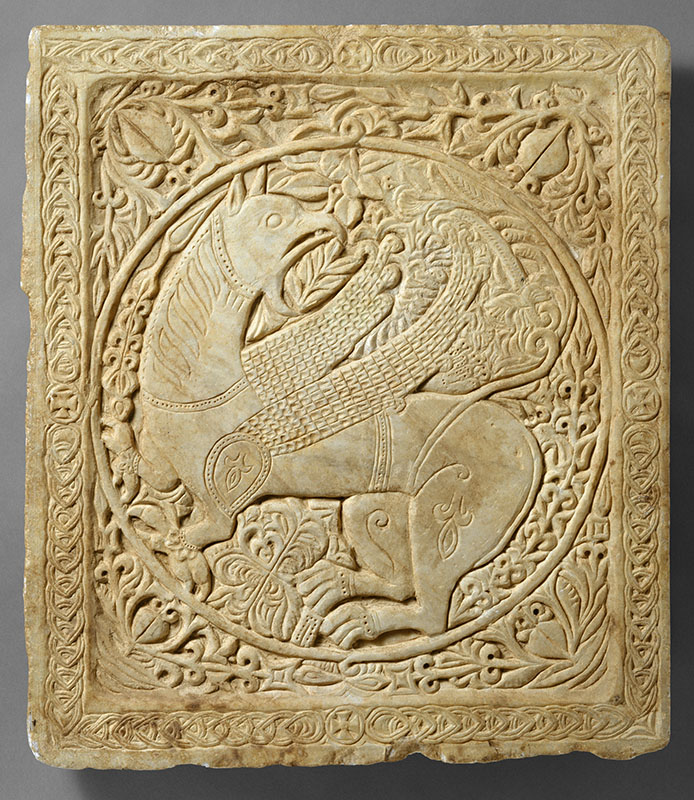
Byzantine Art: Byzantine art is generally dated from the 4th century AD, following the establishment of Constantinople (present-day Istanbul) as the new capital of the Eastern Roman Empire, to the fall of Constantinople in 1453 AD. Byzantine art begins to develop, drawing on Roman, Greek, and early Christian artistic traditions. Byzantine art flourishes, particularly under the reign of Emperor Justinian I (527-565 AD).
The Orthodox Byzantine painting style:

Mosaics, Frescoes & icons:
Two primary techniques dominated: mosaics composed of small colored tiles and frescoes painted directly onto wet plaster. Mosaics were often used for grand, public spaces, while frescoes adorned the walls and ceilings of churches and monasteries. Icons were painted on wood with gold leaf, precious stone and some added casings in gold or silver.
Religious Focus:
Almost all Byzantine paintings served a religious purpose. They adorned churches and monasteries, depicting scenes and figures from the Bible, lives of saints, and theological concepts. Although the writings in Meteora deny this notion in favor of the following statement.
The Orthodox Church is decorated with frescoes and icons. The Orthodox Byzantine painting is not merely a form of art, it is not even a religious painting. Its purpose is not to decorate the walls of our churches or other buildings for the decoration purposes. It is a liturgical art, which depicts or rather narrates the lives of holy persons and sacred historical events of the Orthodox Faith, so as to lead us to a more profound knowledge of the Triune God and the Saints of our Church. It functions as the painted form of the sacred Word of the Gospel.

Spiritual Significance:
Unlike classical art that emphasized naturalism, Byzantine painting aimed to convey a spiritual message. We see elongated and stylized saints and other figures. They have exaggerated gestures and facial features to evoke emotion.
Byzantine painting does not depict present reality, because it is not interested in a fickle world of decay and corruption. It presents the world renewed by the Holy Spirit. Through its techniques, shapes and colors, the byzantine painting attempts to represent our spiritual bodies and the divine glory we shall assume on the day of the Resurrection. Its nature is pious and devotional; its formal beauty is of the spirit, not the body. The sacred figures are depicted in unchanging, uncorrupted form, with spiritual vigor, courage of mind and spirit, frank honesty, sincerity and integrity.

The Orthodox painting has its own rules, determined by the Orthodox theological foundations on which it rests:
1. It abolishes the light of the secular world: In accordance with the laws of nature, secular painting renders the shadows cast by persons and objects. We describe it as turning the form through light and shade. But the Byzantine painting creates form through light alone. All is bright and distinct, because all is illuminated by the never-setting sun of Justice, Christ- the only source of light in all His Kingdom. Shadow symbolizes the sin.
2. It abolishes earthly time and space: The image retains the historical features and context of its subject, but is not bound by them. This is why Orthodox art liberates itself from its constraints. Sometimes, it presents chronologically-different events in a connected depiction. God is timeless and beyond space. Space and time are human concepts, employed for the practical regulations of our lives, while in the Church everything turns into eternity.
3. It abolishes perspective: In secular art painting, every work respects the natural law of perspective. This flattened Perspective, with buildings and landscapes depicted in a simplified way gives focus on the central figures and their symbolic meaning.
Gold leaf & Blue:
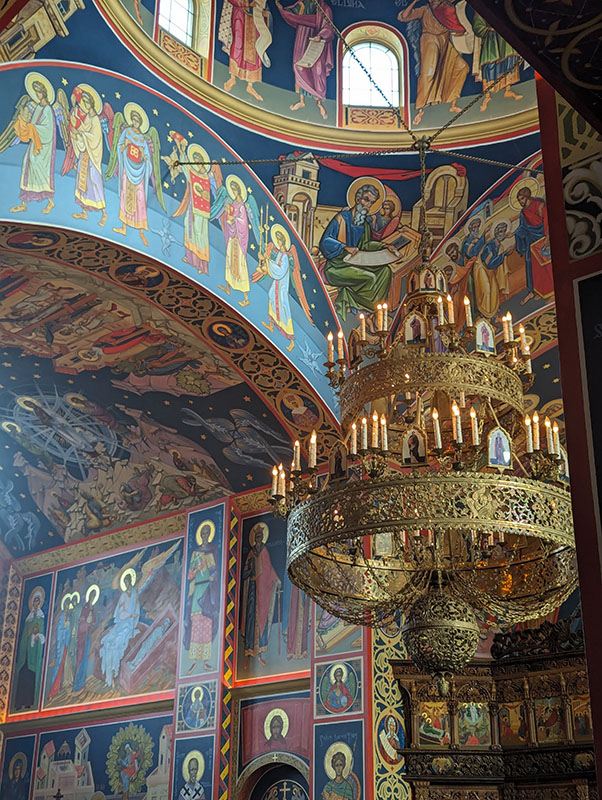
In the Orthodox painting, “depth” or “background” gives way to the “Kampos”- a flat surface, which in the icon painting is covered in gold (symbolizing the Kingdom of God) and in murals is covered in blue (symbolizing the sky). Other vibrant colors like blues, reds, and greens were prominent, creating a sense of awe and majesty. The generous use of the gold leaf added to the opulence and sacred atmosphere of the paintings and icons inside the church.
Why icons look stylized and two-dimensional in the Byzantine painting:
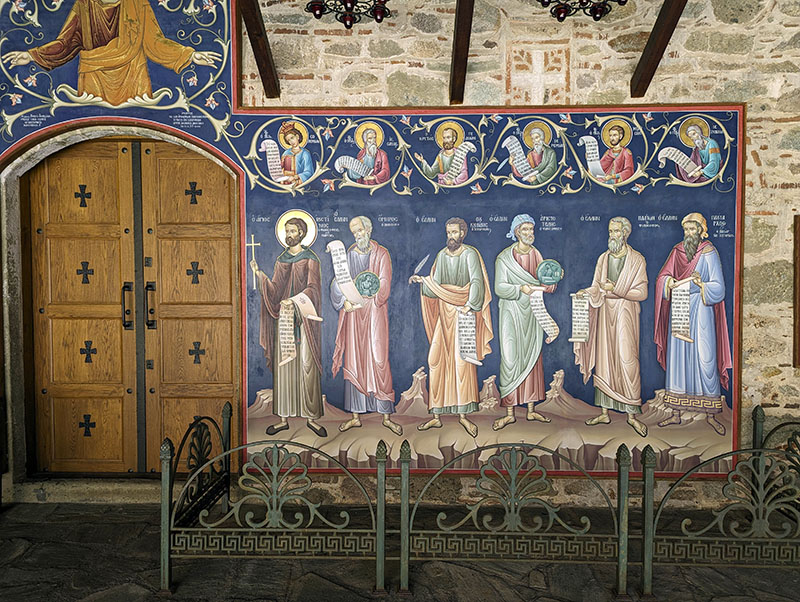
This approach gives prominence to the central theme and assists the function of a “reverse” perspective. This shows the “mystic depth” of the image, which is the work of redemption of our Lord Jesus Christ, who descended to earth from heaven to save the world. His Kingdom has already arrived and His love embraces and raises us to this Kingdom. This embrace is what the reverse perspective is meant to show the icon embraces the worshipper who is standing before it.
The face is always depicted in the Orthodox painting. It’s based on the etymology of the Greek word “face”, that means looking towards the eyes, because all the saints view God “face to face”, according to their soul’s purity. The way in which the features of the face are represented in Orthodox iconography is educational, symbolic and uplifting.
Large and wide-open eyes have a peaceful expression, because they see God, they view His uncreated Glory. The nose is rendered as thin, long and spiritual. The mouth is small and closed, often covered, to show that the depicted person has no need to speak. He has been united with the Word of God, with Christ Himself. He uses speech only when necessary and always to the glory of God. He does not speak, he acts. This also reminds us that “silence is the mystery of the time to come”.
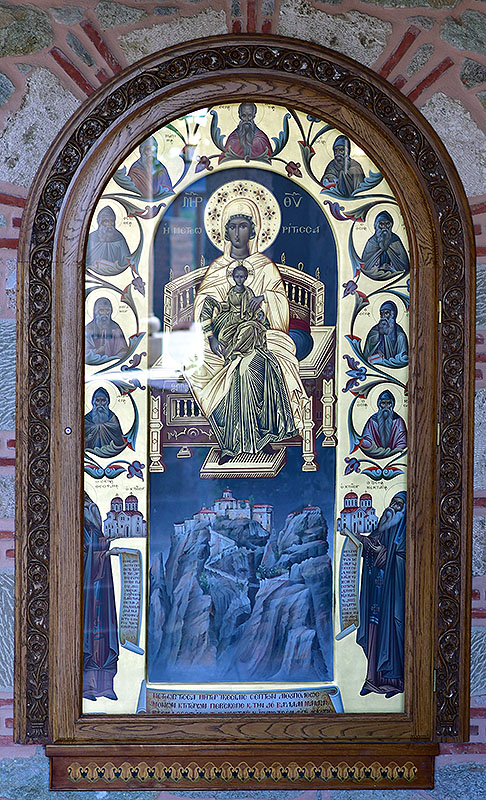
The Saints are depicted with large ears, as a sign that they are ready to listen to the word, the commandments of our Triune God. The saints “listen to” and obey God, which is the reason why all their senses have been blessed and made holy.
In the Orthodox Church we don’t use three-dimensional statues, which represent our material and perishable world. On the contrary, the Byzantine iconography uses only two dimensions (height and width) in its depictions. The third dimension (depth) is intended to be supplied by the faithful as they pray. The believer becomes a part of the icon. The Byzantine iconography (frescoes and portable icons) is a teaching. It’s prayer and theology. It’s transcendence, encounter with the divine, consolation and repose of the faithful in the bosom of our Triune God and His Saints. It’s liturgy means for our salvation and glorification.
Hieratic Scale: The use of hieratic scale meant important figures, like Jesus or the Virgin Mary, were depicted larger than others, emphasizing their significance.
The Holy Monastery of Great Meteoron

This is the oldest and largest monastery in Meteora. Also known as the monastery of Transfiguration, the Megalo Meteoro got founded by the Greek-Serbian Saint Athanasios the Meteorite in the 14th century. The saint was born around 1302 and lived in Athos- the main religious site in Greece before founding the monastic order in Meteora.
He built the church with the words, “I place you under the roof of the Virgin Mary.” The second founder- St. Ioasaph was the son of the Greek-Serbian king of Epirus and Thessaly. The 1387 inscriptions state that he re-built and expended the original church as a sanctuary in the form of a katholikon as it’s present today. Palaiologan wall paintings dated from 1483. St. Ioasaph died around 1422. Both Saint Athanasios and St. Ioasaph are saints in this church who are honored in April. Their skulls have become the venerated relics at the church that are displayed in the narthex of the katholikon.
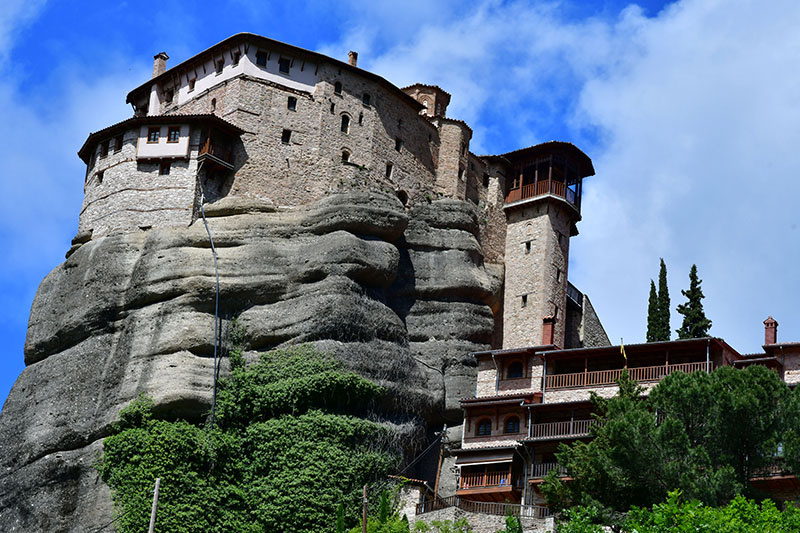
Main church with the narthex got built in 1544 using the Athonite pattern. The mural work in post-byzantine style got completed in 1552 and is attributed to Tziortzis of Constantinople and his workshop.
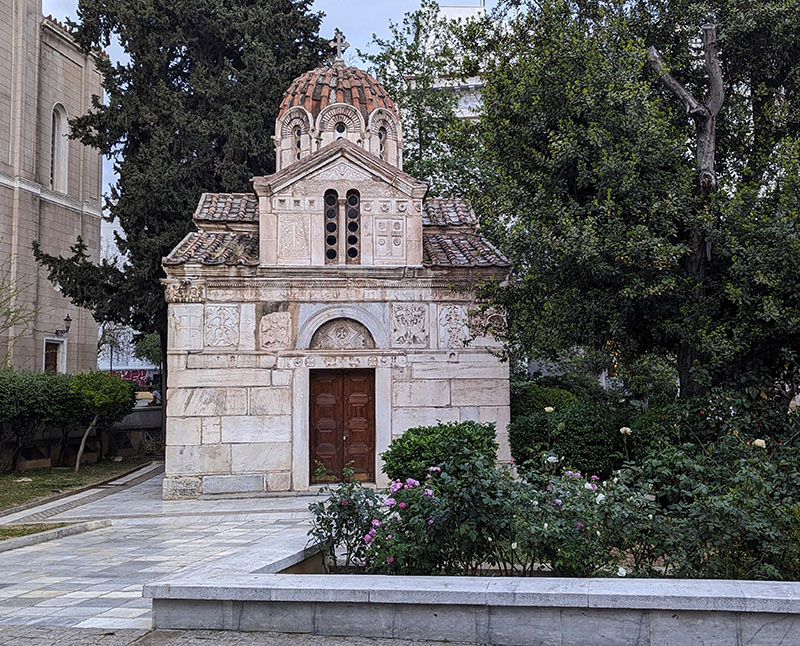
The Athonite church pattern, also known as the Athonite type, is a specific architectural style used in Byzantine churches, particularly prominent on Mount Athos, a monastic peninsula in Greece. Developed around the 10th century, the Athonite pattern is based on the pre-existing cross-in-square plan, a common Byzantine church design. It incorporates modifications:
Addition of Side Chapels: Two lateral apses or chapels are added to the eastern side of the main square, flanking the central apse that typically houses the altar. These side chapels are called "choroi" (singular: choros). Double Narthex: Another key distinction is the presence of two narthexes, an inner narthex (esonarthex) and an outer narthex (exonarthex), attached to the western end of the church. The Athonite pattern was well-suited for the needs of monastic communities on Mount Athos by giving additional space for the liturgies and regulating the flow of visitors.
Distinctive Features of the Athonite Church:
Compact Design: Despite the additions, Athonite churches tend to be more compact compared to some other Byzantine church styles. This practicality suited the mountainous terrain of Mount Athos.
Focus on Interior: The exterior of Athonite churches is often relatively plain, while the focus lies on the interior decoration. Frescoes, mosaics, and iconography often adorn the walls and ceilings, creating a rich visual experience.
Examples of Athonite Churches: Great Lavra Monastery, Vatopedi Monastery and Iveron Monastery at Mt. Athos.
According to the inscription, the abbot Simeon guided building of the old refectory of the monastery. This old refectory houses Georgios Tsioulakis gallery of religious art with paintings of another young artist- Kostas Adamos from Kalabaka. the subjects depict monastic life and liturgy. Originally built in 1575, the two-story infirmary and a ward for the elderly monks is a beautiful monastic infirmary to survive to the present day (the second one is in Varlaam). Thoroughly renovated, the museum now houses monastic manuscripts, old books, printed books, portable icons, woodcarvings, gold-embroidered garments. There is a museum of history beneath the old refectory that shows some Greek history in costumes, documents, folk art, etc.
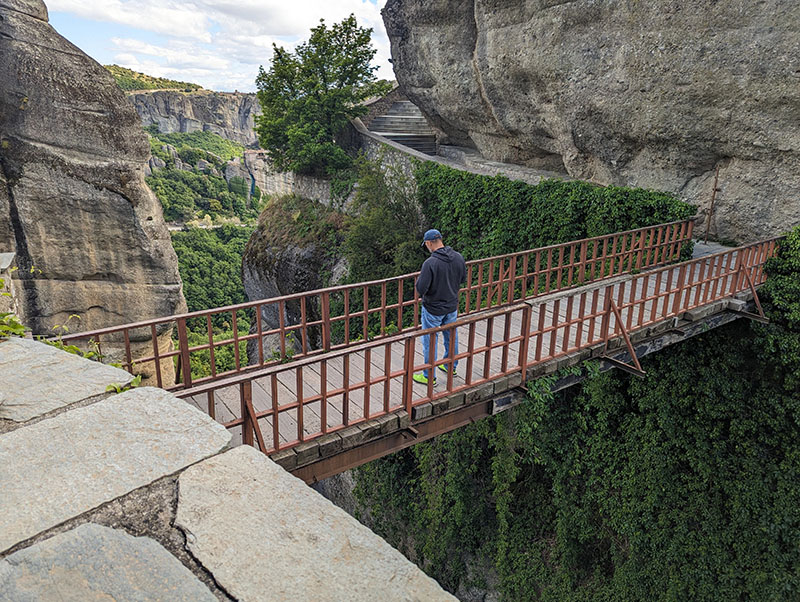
There’s a well-preserved old kitchen and a cellar with utensils, tools etc. The old carpenter’s shop gives a glimpse at the past. It’s really interesting to see the lifting tower and the net, in which monks were hauled up to the monastery before they built the stairs. Finally, the view from the steps of the monastery is just spectacular.
The very center of the church with old walls, iconostasis, frescoes, wood carvings and chandeliers is incredible. I’ve never seen such distinct combination of religious decorations in a church. There is a round, beautiful center piece with icons and a chandelier suspended above to gaze at the painted image of Christ in the cupola. Beautiful carved chairs and candles surround the space. It is amazing to see a living Orthodox monasticism in Meteora that keeps existing for 600 years being inline with the Greek people and their faith.
The Monastery of the Holy Trinity
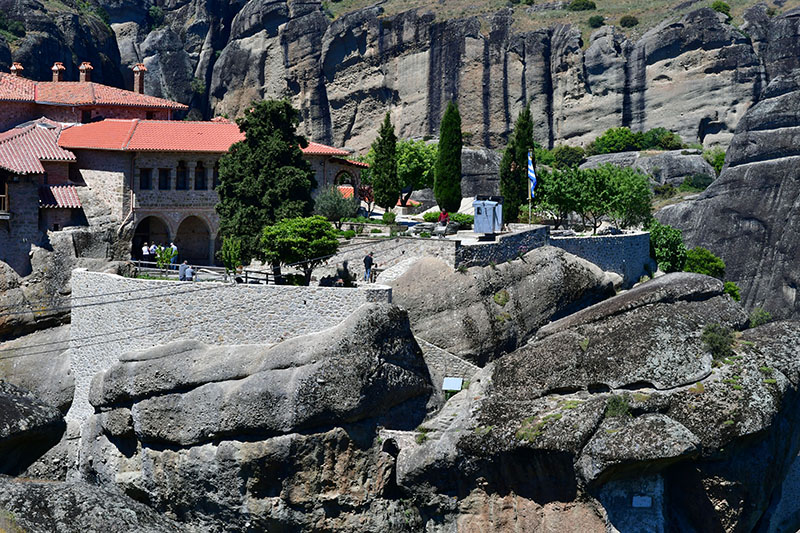
The Holy Trinity Monastery-Agia Triada in Greek- takes a bit of a climb to reach. Established around1362, this is a fairly small monastery with the main chapel or Catholicon dedicated to the Holy Trinity. According to the official site of Meteora (link below), it was abandoned by the 20th century like all Meteora but in 1909, some Greek archaeologists surveying the monastery accidentally discovered a crypt containing 47 rare parchments and ancient codes. In 1925, the local bishop with the help of the locals finished the construction of a safe staircase. During the second WW, the Monastery of Holy Trinity suffered heavy damage with one of its main buildings burning to the ground. Τhe monastery got renovated in the ’70s to welcome visitors today. The Holy Trinity became a movie set in 1981 in the James Bond 007 film “For your eyes only”. The monks didn’t allow to shoot the movie inside and so a separate interior was constructed to shoot the movie scenes.
At the base of the cliff, you can see the old trail of the monks that takes you to Kalabaka.
The Varlaam Monastery
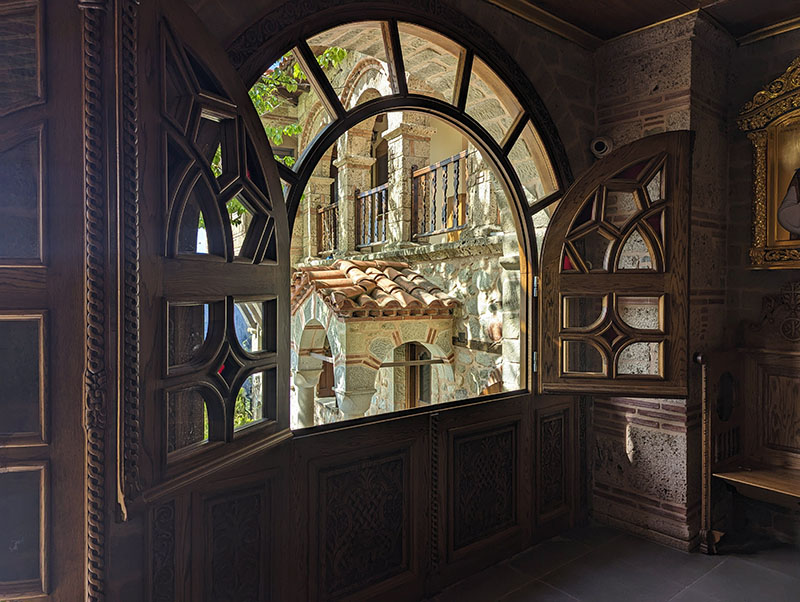
The Holy Monastery of Varlaam is the second largest monastery of Meteora. First founded in the 14th century by Varlaam, the monk climbed the rock cliff to establish the church. It got abandoned and ruined after his death until the early 16th century when two brothers re-established the monastery. These monks-Theophanes and Nectarios spent years building a new chapel dedicated to “All Saints” in 1541. This is the best monastery to see if you’re short on time. It includes a well-lit museum that has a nice presentation of icons, religious art, books, manuscripts, clothing, etc.
Inside the monastery you can also see an old tower with the original lift system the monks used to move stuff and each other. There is a huge 16th-century oak barrel shown in one of the rooms that was used for water storage.
There is a beautiful, one-of-a-kind wood window in the church that faces the courtyard with flowers and stunning views of Meteora.
Hospital-Nursing home at the Varlaam Monastery in Meteora
The nursing home of the Varlaam monastery in maintained as an independent ground floor building at the south-eastern edge of the rock at the south of the temple. The choice of the building’s location was not accidental. It was located outside the building complex, which was developed at the top of the rock, but on a lower plateau, in good orientation, free from other buildings around it, in peace and quiet, isolated, but also close to the monastery temple.
During the Byzantine and post-Byzantine era, it was an important component of the building program of the monasteries for the exclusive care of the sick monks.
The ground plan is square. In the middle there are four cylindrical columns (known as the tetrachion), where the aroula was placed. Aroula is a low square stone base, which served as a fireplace, where special food, hot beverages and even some remedies for the sick monks were prepared. There was a fire place to keep the room warm.
On the north side of the building there are two ground-floor auxiliary rooms, structurally independent of each other. The first one is a small open antechamber which is adjacent to the western side of the chapel of Agioi Anargyroi (Saints Anargyroi). The second room is a small chapel east of the portico, dedicated to Agioi Anargyroi.
St. Stephan’s Monastery

The origins of the monastery date back to the 12th c. The founders of the monastery were St Antonios Kantakouzenos (early 15th c.) from the prominent Byzantine family of Kantakouzenos, and St Philotheos (middle of the 16th c.) from the village of Slatauna, the today’s Rizoma in Trikala. The Old Katholikon (main church) is dedicated to St Stephan and it is one of the first buildings of the Monastery. It was erected in the middle of the 14th c. and rebuilt in the middle of the 16th c. by St Philotheos.
In the 15th c., Dragomir, Grand Vornic of Wallachia, presented the graceful skull of St Charalambos as a gift to the monastery. Thereafter St Charalambos became the second patron-Saint and a strong guardian not only of the monastery but of the whole Greece. He worked several miracles; many believers found comfort and miraculous cure of their illnesses in body and soul.
In 1798, a magnificent new church was erected dedicated to St Charalambos, under the abbacy of Ambrosios. This became the new Katholikon, the monastery’s main church. It is built in the architectural style of Mount Athos. St Charalambos church has a crucifix design with four columns, two lateral niches and the choirs. An inner narthex precedes it with four columns in the center to support its roof. On the north side of the church’s outer wall, there is the addition of an arched porch-outer narthex.
The church features a remarkable iconostasis (altar screen) of exquisite art of wood carvings with elaborate vignettes that depict birds, animals, and scenes from the Old and New Testament. The artist -Kostas and Demitris from Metsovo carved them in 1814. He also made the wood-carved icon-stands in the inner narthex in 1836. The iconography of the Katholikon of St Charalambos started in 1992. This task was entrusted to the well-known and talented iconographer and mosaic maker Vlasios Tsotsonis. He worked in tradition and standard models of the Cretan School of Art.
The Monastery made a very important contribution to the education of the nation. The church school operating in the Monastery has the Bishop and great national benefactor Dorotheos Scholarios (1812-1889) among its students. The Abbot Konstandios built the Konstandios School in Kalambaka in the 19th c.. The Monastery ran a primary school for orphans in the 1970s. During the period of the Turkish occupation, the monastery of St Stephan, like all monasteries of Meteora, was sensitive to the suffering of people and provided assistance to the population. The monastery participated in the resistance during the Greek-Turkish war in 1897 and the Macedonian Struggle (1904-1908). The Monastery’s Abbot was imprisoned during the German occupation for his involvement in the resistance. During the Second World War the entire monastery was severely damaged.
In 1961, the monastery became a convent. By God’s grace, the first nuns who settled here organized monastic community and restored the buildings, despite many difficulties they faced. The historical buildings of the monastery have been renovated with participation of a talented, famous architect and conservator of monuments – Soterios Tzimas.
The primary concern of our sisterhood is to practice the pure Orthodox monastic life. At the same time, we do not eschew social activity. We don’t neglect to offer spiritual support to our visitors, who come to draw on the miraculous grace of our Saints. Our Monastery still pursues its conscientious efforts to prove worthy of its history by continuing its ministry to the Nation, Education and Culture.
In recent years, the monastery built a beautiful cemetery church dedicated to the Archangels and the holy Martyr Claudia with the chapels of Agia Skepi (Holy Protection of the Mother of God) and St Marina.
Museum space: The sacristy of the monastery, housed in the old refectory (a 14th c. church), is of a particular interest to the visitors. Illuminated manuscripts, early printed books, silver and gold crosses used in blessings and processions, sacred vessels and icons are exhibited in this space.
The Holy Monastery of Roussanou
First established in the 14th century, the monastery got almost destroyed during the WWII. Established as a small nunnery today, it has lower elevation, but the ladder that takes you to it is a bit scary to step on if you’re afraid of the heights. Main levels of the church got built in the 16th century that have beautiful frescoes created by a monk-artist. The nuns sell beeswax candles, wine and religious objects in a small gift shop.

The Holy Monastery of Saint Nicholas of Anapafsas
Founded in the 14th century, the Agios Nikolaos Monastery currently experiences a renovation of its interior frescoes. You can see small spaces with 14th-century murals and new ones. The church space is interesting because when you walk it up it feels like catacombs one level built over the next vertically. You have to use the staircase for the access. There is no courtyard like in Varlaam and the church dome itself has no windows. Overall, this monastery feels like a dwelling with carved out spaces for cells, church and the heirlooms.
Resting means anapafsis in Greek, so Agios Nikolaos of Anapafsas translates as Saint Nicholas the one who gives you rest.
PS. We didn’t see the hidden monastery of Ypapanti in Meteora. The old abandoned monastery is located in the northern part of Meteora. Built in the 14th century, Ypapanti monastery is renovated today and accessible. I also suggest to check out the official site of Meteora for some hidden gems in and around town that include caves and museums!
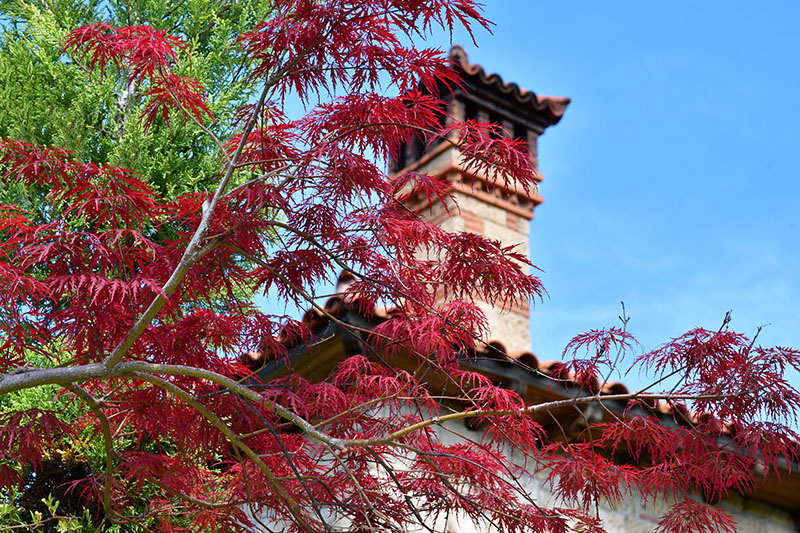
THE GREEK LANGUAGE
The greatest offer of Hellenism to Christianity is the Greek language. The depth, infinity and power coming out of its vivid and clear terminology offered the background and became the most suitable vehicle for the formulation and expansion of Christian Theology. This is the language of the Gospels, the Divine Liturgy, the Hymnography and the Doctrines of the Church. It is the same language that was taught by from Aristotle to Alexander the Great. Finally, it is the language of multiple archeological findings that demonstrate glorious Greek origin of our Macedonia and our enslaved homelands. With this language spoken throughout centuries, Orthodoxy enriched and innovated the Greek terminology of its theology, cosmology, anthropology and gave it its own Christian content.
Over a thousand year-old Byzantine Greek Empire regenerated and reformulated the Ancient Greek Civilization. It gave birth and made known the New Greek-Christian Civilization. It embraced and preserved an entire Ancient Greek spiritual heritage as the Christian teachings about the relation between God, man and the world. Greek Byzantium was the cradle of the great Orthodox Christian Emperors, the Ecumenical Fathers and Teachers of the church, the philosophers.
THE GREEK PHILOSOPHERS
- Sivylla, the Greek philosopher: “He will be sent from heaven the king of centuries, who is going to judge every single man and the whole world”.
- Solon, the Greek savant and legislator, 16 century: “He will be the son of God the Father, without any physical father, the most blessed and the light of the triune divinity. Although He is God, He will come not as God but as human, He who is the light with human flesh The God-man will suffer among the mortals the death on the cross, abuse and burial”.
- Pythagoras, the Greek philosopher and mathematician, 5 century bc: “God is spirit, and the Wont who will take flesh from the father”.
- Socrates, the Greek philosopher, 3 century bc: “And His name will be known and honored all over the world”.
- Apollonius, the Greek philosopher, 1st century ad: “I am talking about an almighty God in three persons, who created heaven and earth. God always existed, exists and will exist without any beginning or end”.
- Homer, the Greek poet, 8 century bc: “After some time, a humble King of the earth will come to you and will be revealed as an infallible man”.
- Thucydides, the Greek Historian, 5″-4″ bc: “Not another God, or an angel, or a demon, or a wisdom nor any other substance. but the only dominant creator of everything is the most perfect Word of all, without exception.”
- Aristotle, the Greek philosopher, “Sometime in the future, somebody will arrive in this multi-divided earth. An omnipotent and infallible man will be born, God’s birth in a natural way. So, the Divine Word will take flesh”.
- Platon, the Greek philosopher , “From the womb of a pure and virgin bride, the unique offspring of God will be born…. (The father twill exist inside his offspring and the offspring inside the father. The one is divided into three and the terve are divided into one)…. (This bride) will bring into the world, both without flesh and with flesh and with the possibility to be born, the creator of heaven and earth”.
- Plutarch, the Greek Father of History, 1″ century A.D.: “I foretell only one God, the most high king, in three persons, whose Word is imperishable, and will be gestated inside a virgin. He, like a burning bow, will arise all of a sudden and will catch in in his nete the whole world and will offer it as a present to his Father.”
PROPHETS
- The Prophet Habakkuk, 6 century bc: “But the time is coming quickly and what I show you will come true. It may seem slow in coming but wait for it it will certainly take place and it will not be delayed” (Hah. b, 3).
- The King and Prophet David, 10 century b.c.: “The Lord said to my lord, the King “Sit here at my right until I put your enemies under you feet”.
- The Prophet Elijah, 9 century bc: “Omnipotent God be blessed. I swear to Him and my life that I will never abandon you” (Kings B. 2,1).
- The Prophet Jonah: “In my distress, O Lord, I called to you and you answered me. From deep in the world of the dead. I cried for help and you heard me” (Jonah b. 3).
- The Prophet Zechariah, 6 century bc: “The Lord said -Sing for joy, people of Jerusalem! I am coming to serve among you! At that time many nations will come to the Lord and become his people. He will live among you and you will know that he has sent me to you” (Zech, b, 15).
- The Prophet Jacob, 18 century: “Judah will hold the royal scepter and his descendants will always rule. Nations will bring him tribute and how in obedience before him” (Gen. 49,an).
- The Prophet Solomon, 10 century: “You, our God, are full of benevolence and real and govern everything with compassion. Because, even if we make a sin, we don’t stop being yours, by re enguizing your majesty and dominance” (Sul. Wisdom ie, 1-2)
- The Prophet Isaiah: “Well then, the Lord himself will give you a sign a young woman who is pregnant will have a son and will name him Immanuel, meaning God with us” (Is. 714). “The royal line of David is like a tree that has been cut down. But just as new branches sprout from a stump, so a new king will arise from among David’s descendants (ls. a, 11. “A Child is born to as. A son is given to us! And he will be our ruler. He will be called Wonderful Counsellor-Mighty God Eternal Father «Prince of Peace” (Is. 9,6-7). The Judge Gideon (12th century bC.): Today I will put clips in the threshing floor. I called you clip Pure Virgin. Your Son showed me the miracle” (Judges 6, 37, 40).
- The Prophet Jeremiah, 6 century bc: “He is our God. Nobody can be compared to Him. He invented and showed all streets of science. After that, He was presented to earth and mingled with people” (Jeremiah c. 15, Varuch 36,38).
- The Prophet Moses,14-13″ century bc: “The Lord and God will give birth to kingship that will never be destroyed” (Daniel b. 44)
- The Prophet Ezekiel, 6 century bc: “Green pastures of the land of Israel, I myself will be the shepherd of my sheep, and I will find them a place to rest. I, the Sovereign Lord, have spoken” (Ezek. 34, 45).
Some practical information to plan your visit:
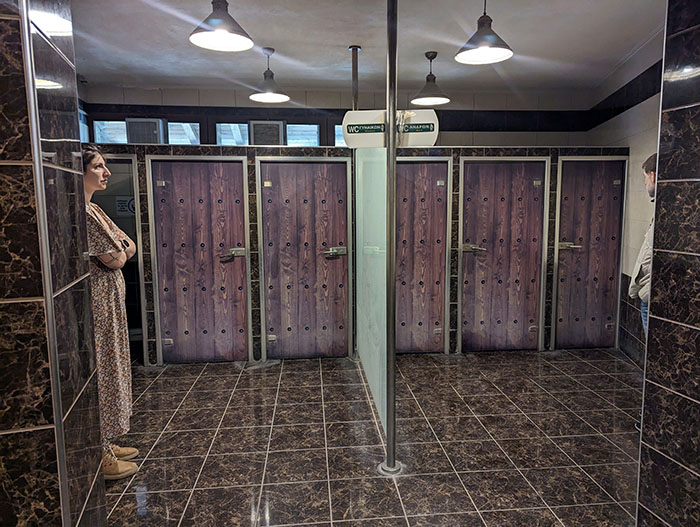
- Meteora is easily accessible by a well-made road. You won’t have to climb the mountains for hours to get to the monasteries. Although some of them do require considerable walk up the stairs or a heel… Big basses, cars and motorcycles somehow fit on parking lots and winding roads. As we rented a car and drove across Greece, we experienced great, new highways that cost quite a lot to make a trip from Athens to Meteora. Every section of the road had a toll to pay that I think was close to 30 euros in total one way…You also must consider the cost of gas on top of a car rental as well.
- Monasteries have different work hours! They are normally open till 3 pm, but it varies. Some close for a day like Tuesday. Check with Google map not to miss their work hours when you visit.
- Monasteries are of different size but none of them is huge. Some are very small and will take you 20 minutes to visit.
- Dress appropriately. Cover your shoulders. Men must wear pants and women must wear skirts. Most visitors don’t, so I find that the clergy is very accommodating to tourists there by giving skirts to wear while on their grounds.
- Video and photography are prohibited inside the very center of the church. However, everything else is open for photography. I found monks to be very tolerant to buses of foreign tourists photographing everything around them…
- The cost of visiting one monastery is just 3 euros per person.
- Surprisingly, they have public restrooms on their grounds.
- Every monastery has a gift shop with jewelry, icons and other religious attributes you could buy.
- Kalabaka is a very small town at the bottom of Meteora where you can stay overnight in a hotel or eat at the restaurant.
- We spent two days in Meteora visiting all churches at leisure enjoying the views and culture of Greece.
- Even if you’re afraid of heights, you can still visit Meteora by avoiding groups of people climbing the mountains and just focusing on the monasteries themselves that are fairly safe to get to.
THE KING OF GLORY
After the disobedience of the Divine Order it created the human beings. The communication between a man and God was interrupted. People began to communicate with their Creator again with the help of the Prophets, Saints, Messengers and Interpreters of the God’s Orders, who predicted “what would happen in the future” and performed miracles in order to confirm their vocation and mission from God.
Faithful Prophets accepted the Divine Revelation of the incarnation of the world’s Savior and transmitted to the people the hope of His coming. For that reason, they are considered to be our spiritual forefathers and first guides towards divine knowledge and our salvation through Jesus Christ.
However, God, together with the Revelation of His Truth to the Righteous and the Prophets, did not let Himself be hidden from the other nations of the world. He enlightened people to talk about the essence of the soul, ideas, the nature of beings, the meaning of the World.
Greek philosophy, poetry and science engraved the future events deeply into history according to the Divine Plan of the world’s salvation. St Justin, the philosopher and martyr declares “whoever lived with prudence and logos (before Christ’s birth) is a Christian, even if he was considered to be an atheist, for instance, among Greeks, Socrates, Heraklitos and others like them”.
All those Greek wise men with their education and spiritual wealth, with their deep longing and love for values, ideals and the purpose of life and death, became loyal and persistent seekers of the truth. They reached very near the True God and, with their teachings, they formed the conditions for His acceptance by the people. For that reason, when St. Apostle Paul, in the Athens Supreme Court of Appeal, was talking to the Athenians about the unknown God (Jesus Christ), who was honored in a special altar, he underlined that “and some of your poets have talked about this” (Acts IZ, 23). Therefore, the meeting of the ancient Greek thinking with Orthodoxy and their union constitutes a milestone with ecumenical dimensions and enormous beneficial effects upon all humankind.
To learn more: visit Meteora: https://visitmeteora.travel/
References: Meteora writings in the monasteries, Meteora website (link above), art history lessons and Gemini.
